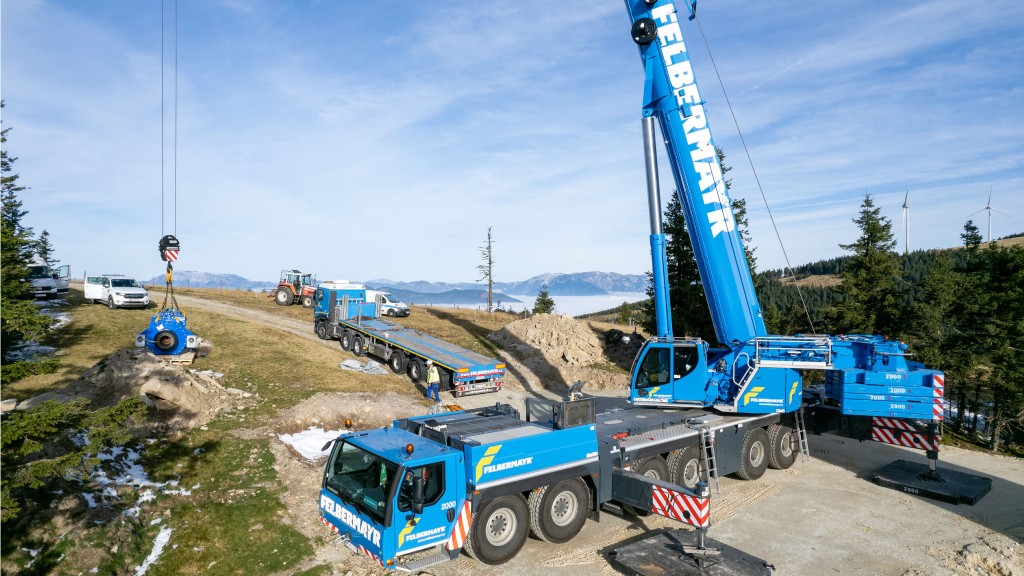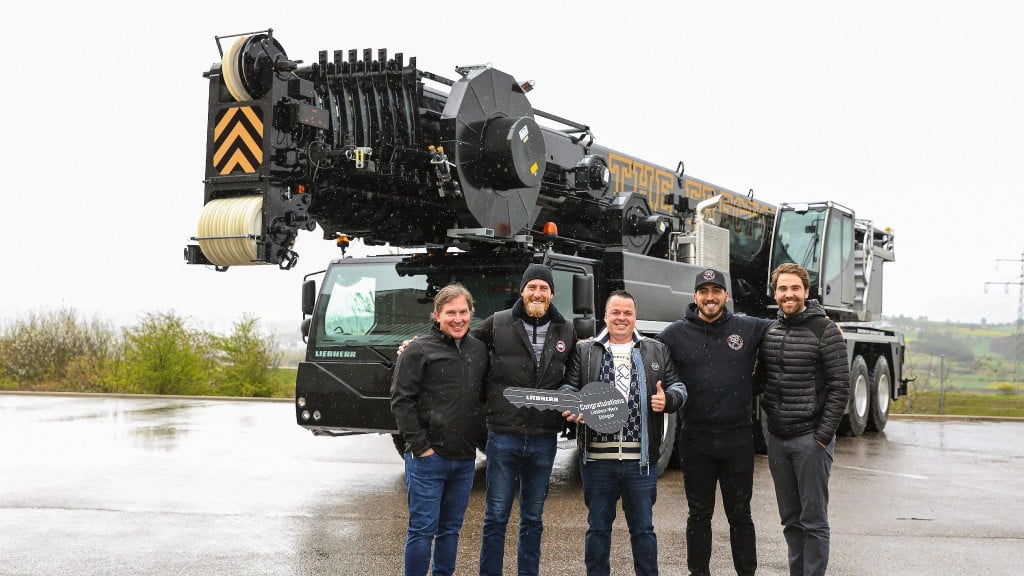
Windy locations are great for operating wind turbines. But strong winds make erecting new wind turbines a challenge. These strong winds also create challenges when repairing old turbines that need new rotors, gearboxes, and other components.
Despite the gusty conditions present at a wind farm in Styria, Austria, Felbermayr deployed a Liebherr LTM 1300-6.3 mobile crane to tackle the job. The mobile crane helped enable the precise replacement of a gearbox on an 18-year-old wind turbine. This defective gearbox on the Steinriegel wind farm was located on a mountain ridge at an altitude of almost 1,600 metres.
Liebherr's mobile cranes equipped with a 90-metre boom come with WindSpeed load charts for conditions with high wind speeds. If the wind speed measured on the crane's boom exceeds the set table wind speed during a job, the crane operator can switch to a lifting capacity table with a higher maximum wind speed so that, ideally, they can continue the work.
These WindSpeed load charts came in handy for Felbermayr who, despite gusts of up to 13 metres per second, was able to configure the load chart to accommodate the wind conditions.
"As the day went on, the gusts got stronger and stronger and I switched straight to the wind chart," reports Robert Fuhrmann, who operates the 6-axle crane for Felbermayr. "I configured the load chart, which allows me to work at wind speeds of up to 13.4 metres per second."
As a rule, the lifting capacities of cranes are calculated for speeds of up to nine metres per second. However, Liebherr has extended this range with the adapted WindSpeed load charts. During pure telescopic operation of LTM cranes, lifting work at wind speeds of up to 15.6 metres per second is possible.
The day before the crane job got underway, Fuhrmann drove his machine from the Felbermayr branch in Lanzendorf, south of Vienna, to the site and set it up ready for lifting. The mobile crane utilized its all-wheel drive to negotiate a six-kilometre gravel track to the wind farm. The gravel track included tight serpentine bends and gradients of over 10 percent. Fuhrmann says that Liebherr's hill start aid helped him drive the LTM 1300-6.3 up steep inclines and around tight corners.
Liebherr says that the LTM 1300-6.3 is ideal for jobs on wind turbines with hub heights of around 75 metres, as the crane carries its entire boom with a maximum telescopic length of 90 metres. This difference in height enables flexibility depending on wind speeds that Felbermayr benefitted from at the Steinriegel wind farm.
Felbermayr deployed the mobile crane on a raised platform for the job. The raised platform enabled the mobile crane to extend its mast to an ideal 74 metres.
As with many repair and replacement projects, the job wasn't straightforward. The fitters inside the nacelle had a hard time removing the damaged components. The old gearbox hung on the crane hook for several hours during the removal process. Because of this extended time in the air, the mobile crane utilized its ECOmode control system to minimize both fuel consumption and noise emissions by disengaging the pump drive when no power is required.
After the stubborn gearbox was removed, Fuhrmann lifted the 12-tonne defective component out of the open turbine and safely to the ground. Immediately afterwards, the replacement gearbox was lifted up and then installed into the wind turbine.
Felbermayr's new crane – which has been in service for around five months – has already completed a number of jobs on Austria's wind farms. The crane has also lifted heavy transformer houses and is also scheduled for construction crane assembly.
Company info
1015 Sutton Drive
Burlington, ON
CA, L7L 5Z8
Website:
liebherr.com/en/can/about-liebherr/liebherr-worldwide/canada/liebherr-in-canada.html



